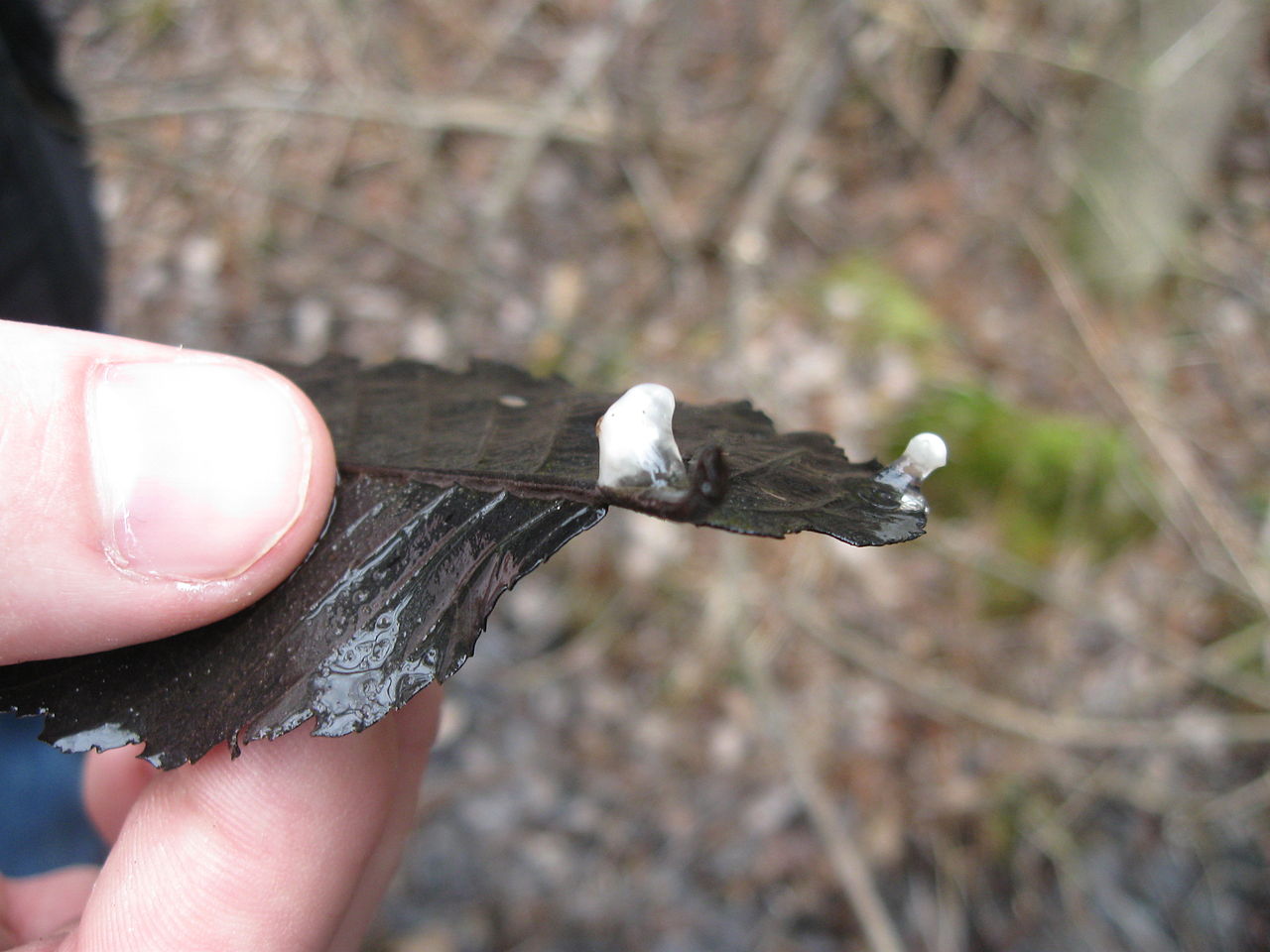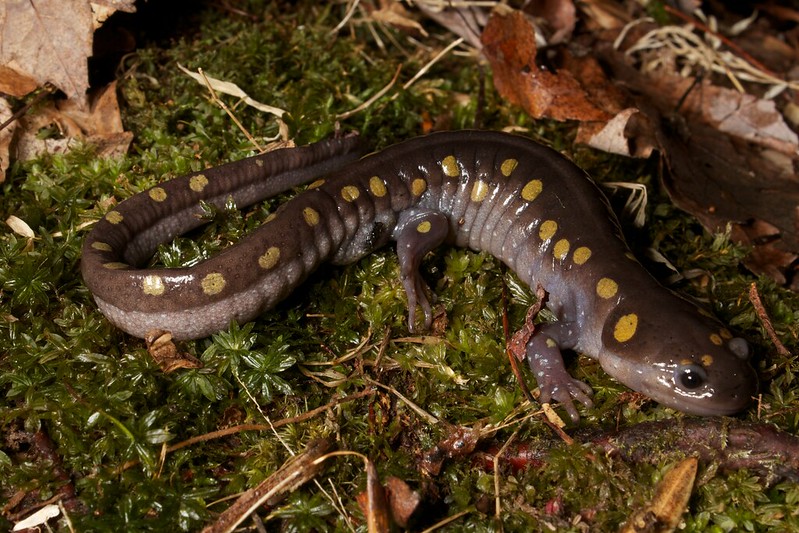Blog
_747_390_s_c1.jpg)
#bioPGH Blog: Amphibian Development, Part Two - Salamanders
 A resource of Biophilia: Pittsburgh, #bioPGH is a weekly blog and social media series that aims to encourage both children and adults to reconnect with nature and enjoy what each of our distinctive seasons has to offer.
A resource of Biophilia: Pittsburgh, #bioPGH is a weekly blog and social media series that aims to encourage both children and adults to reconnect with nature and enjoy what each of our distinctive seasons has to offer.
Last week on the blog, we focused on frog development, and this week we are continuing the study of amphibians by exploring how salamanders go from egg to larvae to adult — if indeed they all follow that pattern (are you intrigued?). Salamander reproduction and development has quite a bit of variation, so the story takes a few more twists and exceptions; but that just makes it more fascinating. It’s toasty outdoors, so grab a lemonade and let’s check this out!
Depending on the family, some salamanders reproduce using external fertilization (similar to what we talked about last week — males and females expel eggs and sperm into a body of water like a pond or vernal pool) and some reproduce using internal fertilization. In the latter category, males will lay down little packets of sperm called spermatophores, and the females essentially come and strategically sit on them to pick up the sperm and allow fertilization.

Spermatophores on a leaf. Photo credit: Wikimedia user placeuvm CC-BY-SA-2.0.
Like with frogs, there is a variety in levels of parental care after the eggs are laid, but salamanders often are not the most attentive of parents. Some species will ensure their eggs don’t dehydrate, other will guard their eggs, and there are even a few salamander species who don’t lay eggs at all and instead give live birth!
For the vast majority that lay eggs, though, development begins quite similar to the frogs we discussed last week. The zygotes (fertilized eggs) will begin undergoing cell division, eventually creating a little ball of cells called the blastula. The cells of the blastula continue dividing and create the gastrula, a ball made of three distinct layers of cells, and each of those layers go on to create different body systems down the developmental road. As cells continue to divide, they also start to differentiate, meaning different cells will serve different functions in different body systems. The little embryo starts taking on a body shape, and they will progress into larvae that live in aquatic habitats (they are not called tadpoles like frogs). This process is striking as you will see in the video below, and though most species only spend a few days or weeks in the larval stage, it can last for multiple years in some species. (There are also a handful of species that skip the larval form altogether and emerge from their eggs looking like tiny adult.)
_Larva.jpg)
Spotted salamander larva. Photo credit Brian Gratwicke, CC-BY-2.0
As the larvae undergo metamorphosis to reach the juvenile stage, they will lose their gills (the little extensions around the head in the picture above) and they will finish developing their limbs and organs — notably their lungs unless they are lungless salamanders who rely on breathing through their skin as adults. For most species, the juvenile stage looks like the adult stage, just smaller. They just have some growing to do to reach their adult size, like this stunning spotted salamander below.

Photo credit: Flickr user Brian Gratwicke, CC-BY-2.0
An important note, though, is that the amphibians we have discussed so far both rely heavily on water for development and reproduction. What effect could poor water quality have on amphibians? I reached out to Dr. Sara McClelland of Moravian College (who recently received her doctorate from Duquesne University). Dr. McClelland is an expert in ecological physiology and she is interested in understanding how human-induced environmental changes, like pollution and pesticide use, can impact animals.
“Amphibians have permeable skin. This allows water and oxygen to easily pass through their skin, helping them breath. However, it also means that any toxins in the environment can more easily enter their bodies through the skin. Dangerous levels of water pollution have been responsible for mass kill offs of fish and amphibians.” Dr. McClelland explained. She also noted that these stages of development we have been discussing are particularly sensitive.
“Even extremely low levels of pollution, which are often considered safe, have been shown to affect amphibian physiology and alter developmental processes. This can negatively impact amphibian health and survival and is one of the major causes for the decline in amphibian populations that is happening worldwide today.”
So what can we do to protect amphibians? The first step is exactly what you’re doing now — learn more about our amphibious neighbors. What we don’t know literally can hurt them. The second is being aware of water pollution sources in your area. Pesticides, herbicides, and road salt can all become issues to amphibians, as well as contamination from energy extraction processes. It’s also important to remember that amphibians are an ecological canary in the coal mine — if something is a problem for them, it will eventually be a problem for us. The good news is we aren’t powerless! If you’ve been fascinated to learn about the development of salamanders, keep learning, keep exploring! Knowledge is power.
Connecting to the Outdoors Tip: If you would like to help monitoring amphibians, check out the Pennsylvania Amphibians and Reptiles Survey. They have resources for learning to identify and spot various salamanders and frogs, and you can even submit your observations to be included in the state record. Pennsylvania also has a state Wildlife Action Plan that encourages citizens to get involved in monitoring wildlife and look for ways to support restoration. Learn a bit about the plan, and then check out Chapter 4, which is all about the ways we as citizens can get involved!
Continue the Conversation: Share your nature discoveries with our community by posting to Twitter and Instagram with hashtag #bioPGH, and R.S.V.P. to attend our next Biophilia: Pittsburgh meeting.
Resources
Nature: The Evolution of Parental Care Diversity in Amphibians
Science Direct: Salamander Development
Georgia Tech- Vertebrate Development
Photo Credit: Andreas Weith CC-BY-SA-4.0, Greg Schechter CC-BY-2.0

